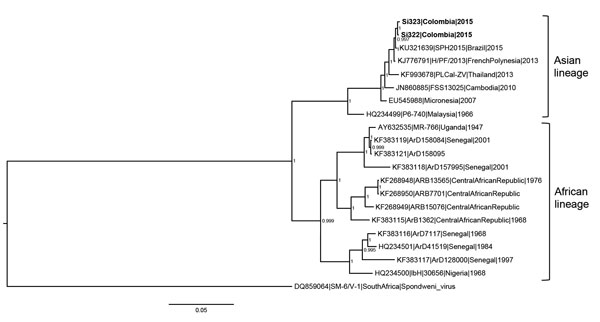Volume 22, Number 5—May 2016
Letter
Detection of Autochthonous Zika Virus Transmission in Sincelejo, Colombia
Figure

Figure. Majority-rule consensus tree based on Zika virus envelope and nonstructural protein 1 gene sequences (2,604 nt) of isolates from patients in Sincelejo, Colombia, October–November 2015, compared with reference isolates. The tree was constructed on the basis of Bayesian phylogenetic analysis with 8 million generations and a general time-reversible substitution model using MrBayes software version 3.2 (http://mrbayes.sourceforge.net). Numbers to the right of nodes represent posterior probabilities for corresponding clades. Samples sequenced in this study are in bold, and sequences are listed with GenBank accession numbers and are coded as accession no./strain/country/year of isolation when all information was available. The Colombia sequences are grouped with the Asian lineage of Zika virus. The tree was rooted with the Spondweni virus isolated in South Africa as the outgroup. Scale bar indicates nucleotide substitutions per site.